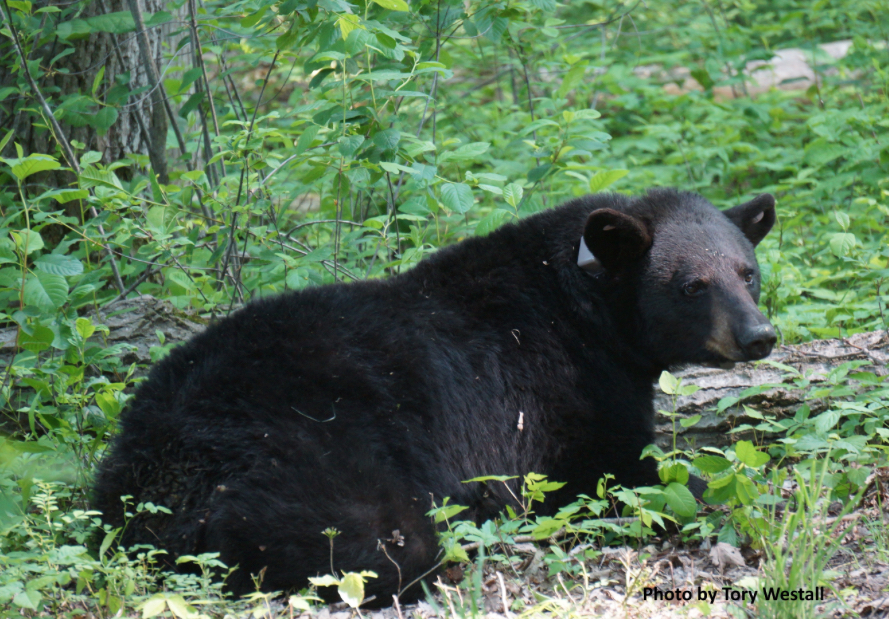
Black Bear Research Ongoing in Ohio
Article Presented By Ross Chillicothe Convention & Visitor’s Bureau…
(Columbus) – The Ohio Department of Natural Resources (ODNR) Division of Wildlife, in partnership with the University of Dayton’s Gantchoff Lab, recently collared a female black bear in Ashtabula County to learn more about how this species is expanding its range in Ohio. This is the first time a female black bear in Ohio has been fitted with a GPS collar.
Black bears are rare in Ohio and are considered a state-endangered species. They disappeared (were extirpated) from Ohio in the mid-1800s, but in the last few decades have been naturally recolonizing the state from healthy populations in bordering areas. Reports of black bears in Ohio are increasing, with most observed in northeast and southeast Ohio.


A female black bear was captured in Ashtabula County with a special trap. The bear was fitted with a tracking collar and released unharmed.
The female black bear that was captured on Tuesday, June 3 is estimated to be 5 to 10 years old and weighed 198 pounds. It was captured on private land in northeast Ohio with landowner permission and released unharmed in the same location after a GPS collar was attached. GPS collars remotely transmit location data, helping researchers to learn about the habitat use and preferences of individual bears. Researchers using the location information can also learn about a bear’s home range size and space requirements, survival rates, and their reproductive status, including litter size and frequency of reproduction. The collar is programmed to fall off the bear before its battery dies, typically after about 18 months.

The black bear’s movements will be monitored to learn more about the species in Ohio. Photo credit: Tory Westall, Gantchoff Lab, University of Dayton
Division of Wildlife biologists are working closely with researchers at the University of Dayton’s Gantchoff Lab to learn more about black bear recolonization in Ohio. The project aims to put GPS collars on 10 to 20 Ohio resident black bears in the coming years to monitor their movement and reproduction. The project also hopes to estimate Ohio’s black bear population trajectories, habitat suitability, and factors impacting human-bear conflicts. In addition to the female bear collared this month, the project is monitoring the movements of a male bear collared in northeast Ohio in July 2024.
It is likely that most bears seen in Ohio are young male bears dispersing from Pennsylvania and West Virginia. These male bears wander widely in search of a mate and territory, and they are unlikely to stay in an area long-term unless a resident female bear is present. Female bears that establish a home range are more likely to remain in Ohio. In recent years, the Division of Wildlife has confirmed the presence of female black bears with cubs in northeast Ohio.
The Division of Wildlife relies in part on public reports to monitor Ohio’s growing black bear population, as well as populations of gray fox, badger, weasel, and bobcat. Report observations of these species, including photos or videos, to the Division of Wildlife via the HuntFish OH mobile app or at wildohio.gov.































